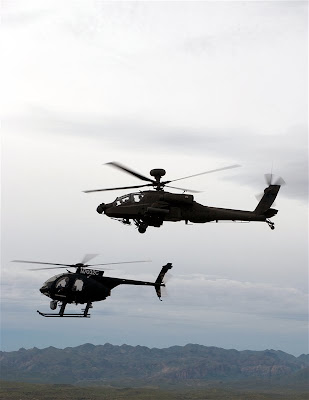23 Juni 2009
.jpg) N-22 Nomad versi Searchmaster(photo : Kaskus Militer)
N-22 Nomad versi Searchmaster(photo : Kaskus Militer)
SURABAYA (SI) – Pusat Penerbangan TNI AL (Puspenerbal) pada 17 Juni lalu genap berusia 53 tahun. Puncak peringatan hari ulang tahun (HUT) ke-53 akan digelar hari ini di markas Puspenerbal, kompleks Pangkalan Udara TNI AL Juanda.
Bersamaan HUT tahun ini, Puspenerbal menerima kabar gembira. Sejumlah armada pesawat intai jenis Nomad bakal diganti dengan pesawat CN-235 produksi PT Dirgantara Indonesia (PT DI). Kendati baru sebatas rencana, dipastikan hal ini bisa menjadi kado istimewa bagi Puspenerbal.
Rencana tersebut diharapkan menjadi tonggak penambahan sekaligus peremajaan alat utama sistem senjata (Alutsista) Puspenerbal TNI AL. Komandan Puspenerbal Laksamana Pertama (Laksma) Rudy Hendro Satmoko menegaskan, penggantian Nomad sebagai alutsista lama telah masuk dalam rencana strategi (renstra) 2010–2014.
”Dalam waktu dekat akan ditandatangani perjanjian dengan PT DI Bandung. Kami akan mengganti pesawat Nomad yang berumur 20 tahun ini dengan CN-235,” terang Rudy Hendro Satmoko di sela-sela geladi bersih peringatan HUT Puspenerbal kemarin. Menurut dia, CN-235 ini dilengkapi patroli maritim, radar, forward looking infrared, dan sarana lain pendukung pelaksana tugas.
”Ada tiga (unit CN-235) yang akan masuk ke Puspenerbal. Mudah-mudahan segera ditandatangani kontraknya. Kemudian sampai 2014 akan ada enam,” katanya. Rudy menambahkan, pesawat Nomad datang ke Surabaya antara 1983–1990. Terakhir datang pada 1993. Nomad yang datang lebih dulu akan diganti dengan CN-235. Nomad yang datang belakangan akan tetap dimanfaatkan antara 5–10 tahun ke depan sambil menunggu pengganti.
”Kita sekarang masih cukup optimal penggunaan Nomad ini. Memang harus dengan ekstra maintenance untuk melaksanakan tugas nihil kecelakaan. Kita di laut, penerbangan rendah untuk mengintai kapal. Kalau tinggi-tinggi, nggak bisa melihat jenis kapalnya,” terangnya. Rencana tersebut, lanjutnya, dinilai masih belum cukup.
CN-235 versi patroli maritim (photo : Defense Studies)
Puspenerbal juga menggagas menambah jumlah helikopter. ”Saya (sempat) ke Paris Air Show melihat peluang-peluang untuk kita menambah unsur helikopter antikapal selam. Masih belum tentukan jenis pesawat apa? Tapi jenis pesawat helikopter antikapal selam,” urainya. Pesawat helikopter ini ke depan akan menjadi satu paket dengan Kapal Perang Republik Indonesia (KRI).
”Pesawat helikopter memang bisa onboard di KRI. Jadi,nanti satu kelengkapan dengan KRI di kapal,” tegasnya. Kendati demikian, kata Rudy, masih diperlukan banyak kajian untuk menentukan jenis pesawat helikopter yang akan dibeli. ”Yang jelas punya radar, punya sonar, dan dilengkapi senjata torpedo, dan rudal antikapal permukaan. Sebagai bagian dari different effect, efek penangkalan. Seperti sekarang di Ambalat, kita sering dilecehkan. Paling tidak (keberadaannya) bisa mengimbangi, ”paparnya.
Selama penambahan sekaligus peremajaan belum terealisasi, imbuhnya, Puspenerbal mengedepankan aspek manajemen. ”Memang faktor anggaran sangat penting dalam penyiapan personil maupun materiil pesawat udara. Tetapi sebetulnya, yang lebih penting adalah faktor manajemen. Artinya begini, dalam pesawat udara ada filosofi go or no go,terbang atau tidak. 100% atau 0%. Tidak boleh setengah-setengah, 50%. Jika 0% tidak boleh terbang, 100% boleh terbang,” bebernya. Untuk mencapai 100%, Puspenerbal dihadapkan kendala anggaran.
Karena itu, melalui manajemen Puspenerbal mengedepankan asas prioritas. Jadi, dalam operasional dicapai nihil kecelakaan. Untuk mencapai nihil kecelakaan, Puspenerbal bukan hanya menyiapkan alutsista untuk supaya bisa 100% dioperasikan. Namun, juga menyentuh aspek psikologi serta medical check setiap 6 bulan bagi penerbang atau awak lainnya.
”Kemudian setiap enam bulan juga dilaksanakan pengecekan. Jadi, mereka terbang setiap enam bulan bersama instruktur dicek lagi. Penerbang ini masih baik atau tidak? Dilihat, ada kecenderungan menurun, stop dia, dilatih lagi. Tajamkan fungsi manajemen untuk mencapai nihil kecelakaan,” pungkasnya.
Sementara itu, pada upacara HUT ke 53 Puspenerbal hari ini dijadwalkan Kepala Staf Angkatan Laut (KSAL) Laksmana TNI Tedjo Edhy Purdijatno sebagai inspektur upacara. Sipamdok dan Publikasi Puspenerbal Mayor Laut (p) Dani Hamdani menambahkan, tema HUT Penerbangan tahun ini adalah ”Dengan Semangat Darma Jalakaca Putra, Penerbangan TNI AL bertekad meningkatkan profesionalisme dalam pengabdian terbaik kepada bangsa dan negara.
”Tema tersebut sangat relevan dengan tekad luhur yang terkandung dalam upaya mewujudkan penerbangan TNI AL yang besar,kuat, dan profesional,” tandas Dani. Menurut dia, bersamaan peringatan ulang tahun ke-53,Puspenerbal bukanlah organisasi yang muda. Namun, cukup dewasa untuk dapat lebih mandiri dan mengaplikasikan tugas pokok dengan meningkatkan kemampuan secara profesional. Selain itu, lanjutnya, mensinergikan seluruh jajaran di bawah pembinaan Puspenerbal.
”Penyelenggaraan peringatan ini pada hakikatnya merupakan upaya melestarikan nilai- nilai sejarah terhadap eksistensi awal berdirinya Penerbangan Angkatan Laut,”pungkasnya.(soeprayitno)
 F-5 Tiger of the RTAF (photo : Defense Industry Daily)
F-5 Tiger of the RTAF (photo : Defense Industry Daily)






























.jpg)































